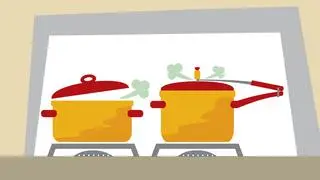A quarter century ago, India opened her arms to the world when the government then in office announced a spate of reforms and ushered in liberalisation. The announcement brought in dozens of international brands. However, the India of 1991 was a split persona (by some accounts it still is). One part was getting ready to take giant strides in the global economy and the other was holding tradition close to her heart. Probably why, some ads of those times had the models essaying a double role. Cases in point: Coca-Cola and Top Ramen.
The world’s leading cola brand and the Japanese company that created the instant noodle were among the first few brands that used this window of opportunity to enter India. And some of their earlier advertising campaigns had Hindi film superstars enacting dual roles. In one of the earliest Coca-Cola ads in India in the mid-to-late 1990s, Aamir Khan plays a double role trying to steal a bottle of Coca-Cola from his lookalike. (This was much before the actor did the more popular Thanda Matlab… ads for the cola brand.)
For Top Ramen, from Japanese instant noodle maker Nissin, which also entered India in 1991, Shah Rukh enacted a double role in one of its ads intended to Indianise Top Ramen Noodles. To advertise the brand’s curry flavour offering with a tagline, “ Dil full, pet houseful ” one part of Khan is engrossed in a game of cards, while the twin distracts the attention of the co-players with the aroma of the noodles. As the co-players are enjoying their noodles, the card player looks at the cards of his opponents and makes his next move.
Clarion call for digitalWhile many of us have witnessed the current government’s Make In India campaign to spur manufacturing, few would be aware that it was in the early years of the reforms (mid-1990s) when there was some talk of sprucing up the Made In India image through advertising. In those days, when China was not the obvious comparison, there were references to how India could use Japan’s country of origin success story as a benchmark. The 1990s was also the era when India was beginning to see its first few websites like rediff.com (then called “rediff on the net”), among others. Then, advertising industry leaders made a clarion call to embrace the digital medium. Some lament that 25 years later, when digital is a force to reckon with, many industry conventions continue to make the same call.
The other thing that changed permanently for advertising in the 1990s were the names on the door. Prominent Indian agencies such as Trikaya, Chaitra or Clarion were not just taken over by international networks but also renamed, much like major Indian metros Bombay and Madras were rechristened in the mid-1990s as Mumbai and Chennai.
The 1990s also saw the entry of many fashion brands into India. They included Benetton, Pierre Cardin and Lacoste. While most of the advertising from these fashion brands was the usual stuff, Benetton stood out from the crowd because of its ability to create shock value from its advertising. One of its ads showing a black horse mating with a white horse created a lot of outrage across the world. However, the copy on the ad read: Reflection of a principle we often forget; what is natural is never vulgar.







Comments
Comments have to be in English, and in full sentences. They cannot be abusive or personal. Please abide by our community guidelines for posting your comments.
We have migrated to a new commenting platform. If you are already a registered user of TheHindu Businessline and logged in, you may continue to engage with our articles. If you do not have an account please register and login to post comments. Users can access their older comments by logging into their accounts on Vuukle.